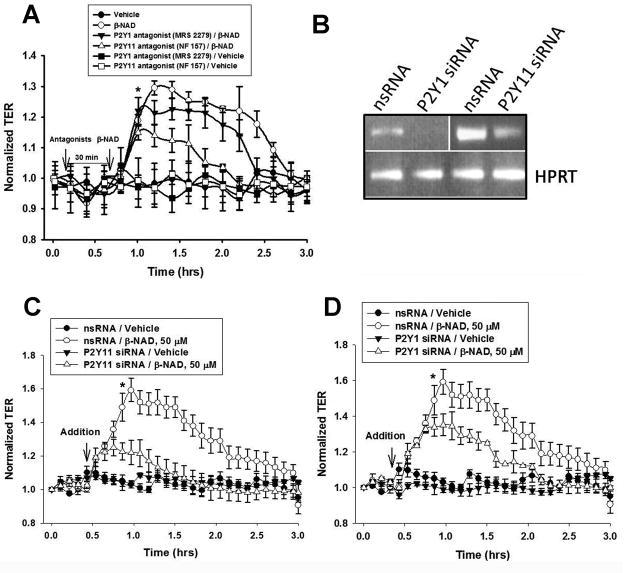Figure 3.
Inhibitory analysis (selective antagonists and siRNA-mediated depletion) of the involvement of P2Y1 and P2Y11 receptors in β-NAD-stimulated TER increase. (A) HPAEC were pretreated with either 10 μM MRS2279 (P2Y1 antagonist) or 1 μM NF157 (P2Y11 antagonist) for 30 min prior β-NAD stimulation and used in ECIS assay. Data are representative of several independent experiments (minimum of three) (*p < 0.05 compared with control). (B) RT-PCR analysis of the expression of P2Y1 and P2Y11 mRNAs in the cells treated with scrambled and receptor-specific siRNA. siRNA approach was proved to be very effective in the depletion of P2Y1 and P2Y11 expression. Expression of hypoxanthine-guanine phosphoribosyltransferase (HPRT) was used as a loading control. (C, D) Depletions of P2Y11 (C) or P2Y1 (D) receptors negatively affect β-NAD-mediated TER response. HPAEC plated in ECIS arrays were transfected with respective scrambled (nsRNA) and siRNA as described in Materials and Methods. 48 hrs after transfection, the cells were used in ECIS assay in the presence or absence of β-NAD. Time-points of β-NAD addition are indicated by arrows. Data are representative of several independent experiments (minimum of three) (*p < 0.05 compared with control).

